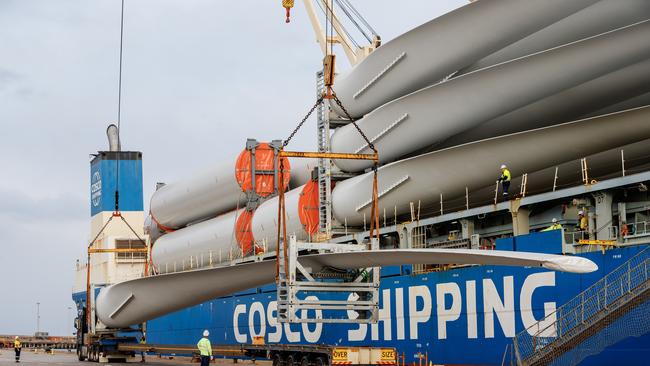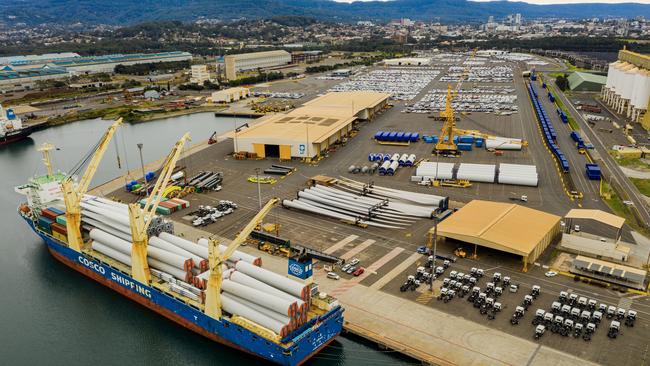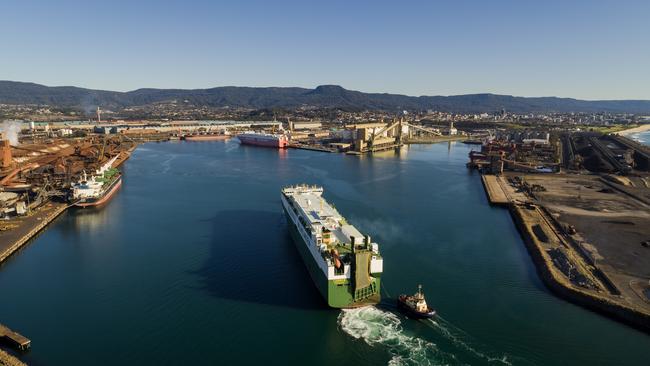Supply chains remain resilient
NSW’s key trade gateways have remained open and operating during the pandemic.

Over the past six months, we have witnessed the widespread effects of the COVID-19 pandemic on virtually every sector of the economy. Throughout this challenging period our ports and port-supply chains have remained resilient.
Through collaboration and the implementation of rigorous safety measures, NSW’s key trade gateways of Port Botany and Port Kembla have remained open and operating 24/7 to continue the flow of goods to support individuals, families and businesses.
In addition to the ongoing movement of ships throughout the pandemic, arriving with imports and taking exports to global markets, NSW Ports and port operators have continued to invest in initiatives that will enable the ports to support the economy of NSW into the future as our population and trade volumes continue to grow.
Planning for growing trade volumes
Located within Australia’s largest population centre, Port Botany handles 99.6 per cent of NSW’s container volume and is inextricably linked to our lives and our lifestyles — if you live in Sydney, nearly half (42 per cent) of all goods in your household have been imported in a container through Port Botany, including food, beverages, footwear, floor coverings, mattresses, paints, fridges, televisions and toys.
The ships carrying these goods have been rapidly increasing in size. In the past 12 months, 105 vessels capable of carrying more than 8000 Twenty-foot Equivalent Units (or TEUs, the standard measurement of a container) arrived at Port Botany, compared with just 37 ships of this size in the previous 12 months. The largest container vessel to call at Port Botany was the CMA CGM Ural in June this year — a 10,622 TEU ship — the size of three football fields and as high as a 15-storey building.
To sustainably support NSW’s future trade growth, we are investing in port infrastructure including wharves and berths to accommodate these larger vessels. We also continue to lead the way in Australia in sustainability initiatives with our environmental shipping incentive (ESI) program which rewards ships with higher standards of emissions performance through financial incentives.

As part of the World Ports Sustainability Program, our ports are the only ones in Australia with an ESI program.
In the past 12 months, more than 570 vessel visits have qualified for an ESI incentive.
Investment also continues on landside infrastructure to sustainably grow the use of rail to transport cargo and reduce the growth of trucks on our roads. Currently 420,000 TEUs are moved by rail each year, and we have a long-term goal to achieve 3 million TEUs per year on rail. Every 1 million TEUs moved by rail reduces the number of trucks around the port by 900 per day and reduces CO2 emissions by 5400 tonnes per annum.
‘Investment also continues on landside infrastructure to sustainably grow the use of rail to transport cargo and reduce the growth of trucks on our roads’
To make this happen, we need to ensure there is sufficient rail capacity. For this reason, we are investing in a staged program to increase rail capacity at Port Botany. The first stage is a joint investment of $190m with Patrick Terminals to double their existing port-side rail capacity. Due for completion in 2023, the project will deliver significant benefits for importers and exporters with more capacity and faster turnaround times
.

We are also investing $250m in developing the Enfield Intermodal Logistics Centre, which includes a rail terminal operated by Linx Cargo Care and logistics warehouses, connected by 18km of dedicated freight rail to Port Botany. Together with other metropolitan rail facilities, these logistics hubs will reduce the kilometres travelled by trucks on Sydney’s road network.
Port Kembla, a port of growth
As an international trade gateway for bulk agricultural, construction and mining products, Port Kembla continues to demonstrate its role as a key trade gateway supporting the growth of NSW.
Throughout the pandemic, Port Kembla has retained strong volumes of cement clinker imports to support Sydney’s construction activities and, during the recent NSW drought, grain export terminals were converted into grain import terminals.
In recent months, we have seen increased volumes of “project cargo”, as Port Kembla has specialised expertise in this field, including:
● Wind turbines for the Biala and Bango Wind Farms in NSW. When fully operational, they will produce enough electricity to power 146,000 homes.
● Several tunnel boring machines for the Snowy 2.0 project.
● New Intercity Fleet train carriages, which were unloaded directly onto the Port’s rail infrastructure. In total, 554 rail carriages will be imported during the next few years.
We continue to progress plans for Australia’s first LNG import gas terminal project and looking to the future, Port Kembla is identified by the NSW government as NSW’s next container terminal, once Port Botany nears capacity.
Sustainably supporting NSW
Investment in sustainability initiatives and infrastructure capacity at Port Botany and Port Kembla will ensure that these key trade gateways continue to effectively service NSW’s long-term growing trade needs.
Marika Calfas is chief executive of NSW Ports.
